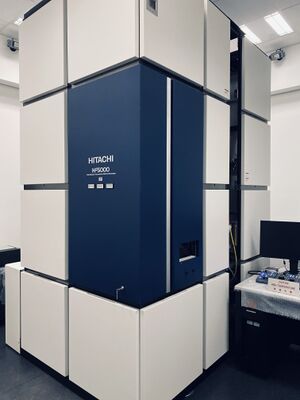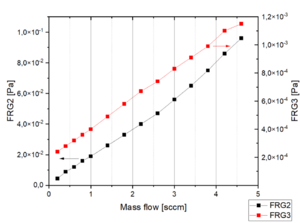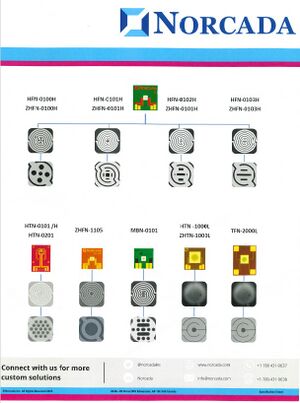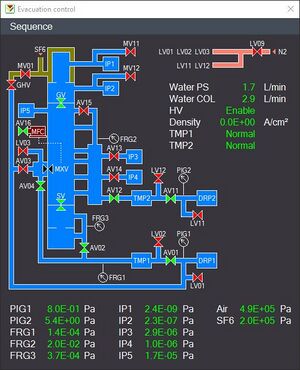
The Hitachi HF5000 is a cold FEG TEM/STEM with a Cs probe corrector fitted with double EDX Ultra 100 detectors from Oxford Instruments, a CEOS spectrometer with TTZ camera and Medipix direct electron detector.
The column has attached a gas inlet for gas experiments or ETEM capabilities.
Microscopists planning to use this instrument should contact [Janghyun Jo], [Paul Paciok] or Ansgar Meise. Questions regarding holders or ETEM should be addressed to [Shibabrata Basak].
Applications and limitations of use
Now that the initial training phase is complete use is open to all members of ER-C/PGI5. Please speak to the established users in your working group to arrange training directly with them.
Instructions
A rough user manual can be downloaded here: File:Hitachi HF5000 Training notes.pdf However this manual should be considered a reminder of the training and full training is still required before use of the microscope.
Status
• 12.05.22: The ETEM capabilities were sucessfully installed and tested. The gas mixing station allows to mix up to 3 gases. Oxygen, Nitrogen and CDA can be inserted. The use of other gases requires consultation with Hitachi.
• 03.12.21 : The Medipix camera is installed behind the CEOS energy filter (CEFID). The EELS alignments for 60, 80 and 200 kV are complete and stored in the software. Additionally, shorter camera lengths with different acceptance angles (20, 40, 60 mrad) are available and saved in the PDS. A storage in the Hitachi interface is being worked on.
• 29.06.21 : The Medipix camera is away for service. The CEOS 200kV EELS alignment is complete, 60 and 80 kV alignments are still being worked on. Once these are complete EELS training will be rerun with CEOS. Training on all holders is complete, please contact the appropriate person for training.
• 09.12.20 : The Medipix and remote PCs have been installed. All holders have been delivered as well as the gas injection system. A persistent beam instability is present.
• 17.08.20 : The Microscope is now installed and working for STEM, EDX and SE imaging. Training has been completed for the first user group. Currently EELS, Medipix and data transfer/storage are all still missing.
Specifications
Beam Current Measurement
Because this microscope is a cold FEG the beam current decays over time and the gun must be flashed every two hours or so. The following measurements should be considered a guideline only.
Taken on 01.10.2020 at 200kV with a 10uA preset current, a few minutes after flashing and not the first flash of the day. Units are pA.
| Spot Size | Apt 1 | Apt 2 | Apt3 | Apt 4 | Apt 5 | Apt 6 |
|---|---|---|---|---|---|---|
| UHR | 197.1 | 10.8 | 8.9 | 6.3 | 4.6 | 0.9 |
| HR Mapping | 1,421.8 | 70.6 | 60.8 | 42.4 | 28.1 | 5.4 |
| HR | 3,056.6 | 158.4 | 133.9 | 84.6 | 56.5 | 11.8 |
| Normal | 13,295.3 | 673.5 | 560.1 | 393.3 | 251.9 | 47.8 |
| EDX | 21,560 | 1,218.7 | 1,032.5 | 690.6 | 458.9 | 88.4 |
Specimen holders
Current the following specimen holders are available:
- Single tilt
- Double tilt, low background
- Tomography +/- 70 Degrees
- Faraday cup holder
- Single tilt heating holder
- Double tilt heating holder
- Electrochemistry holder
In situ TEM

For in situ heating experiments a single tilt (alpha tilt 3°) MEMS heating holder can be occupied. A variation of different NORCADA chip designs can be used (check figure).

The environmental capabilities of the HF5000 allow column pressures up to 10-1 Pa which is equal to around 10-20 Pa in the specimen vicinity. Applying the gas mixing station up to 3 gases can be mixed. Oxygen, Nitrogen, compressed, dry air and Hydrogen can be injected into the microscope. Generally, no poisonous, corrosive or explosive gases are permitted. Other gases than listed need consultation by Hitachi HT in advance. The gas in situ experiment should not exceed 1 hour. Simultaneous EDS measurements are not possible. The pressure level inside the column (FRG2) is controlled by a mass flow controller (MFC). The table below links the mass flow of Oxygen to the different pressure gauges.

| Mass flow [sccm] | FRG-2 [10-2 Pa] | FRG-3 [10-4 Pa] | IP5 [10-5 Pa] |
|---|---|---|---|
| 0,2 | 0,44 | 2,4 | 1,4 |
| 0,4 | 0,89 | 2,8 | 1,5 |
| 0,6 | 1,2 | 3,2 | 1,7 |
| 0,8 | 1,6 | 3,6 | 1,8 |
| 1,0 | 1,9 | 4,0 | 2,0 |
| 1,4 | 2,6 | 4,9 | 2,3 |
| 1,8 | 3,3 | 5,8 | 2,8 |
| 2,2 | 4,0 | 6,7 | 3,2 |
| 2,6 | 4,7 | 7,4 | 3,7 |
| 3,0 | 5,6 | 8,3 | 4,3 |
| 3,4 | 6,5 | 9,1 | 4,7 |
| 3,8 | 7,5 | 9,9 | 5,4 |
| 4,2 | 8,6 | 11 | 5,9 |
| 4,6 | 9,6 | 11 | 6,5 |
Instrument officers
The instrument officers of the microscope are Paul Paciok, Janghyun Jo, Ansgar Meise and Shibabrata Basak (for the in-situ holders).
Location
Building: 5.02 Microscope room: 2004 Operator Phone: 02461 61 9269